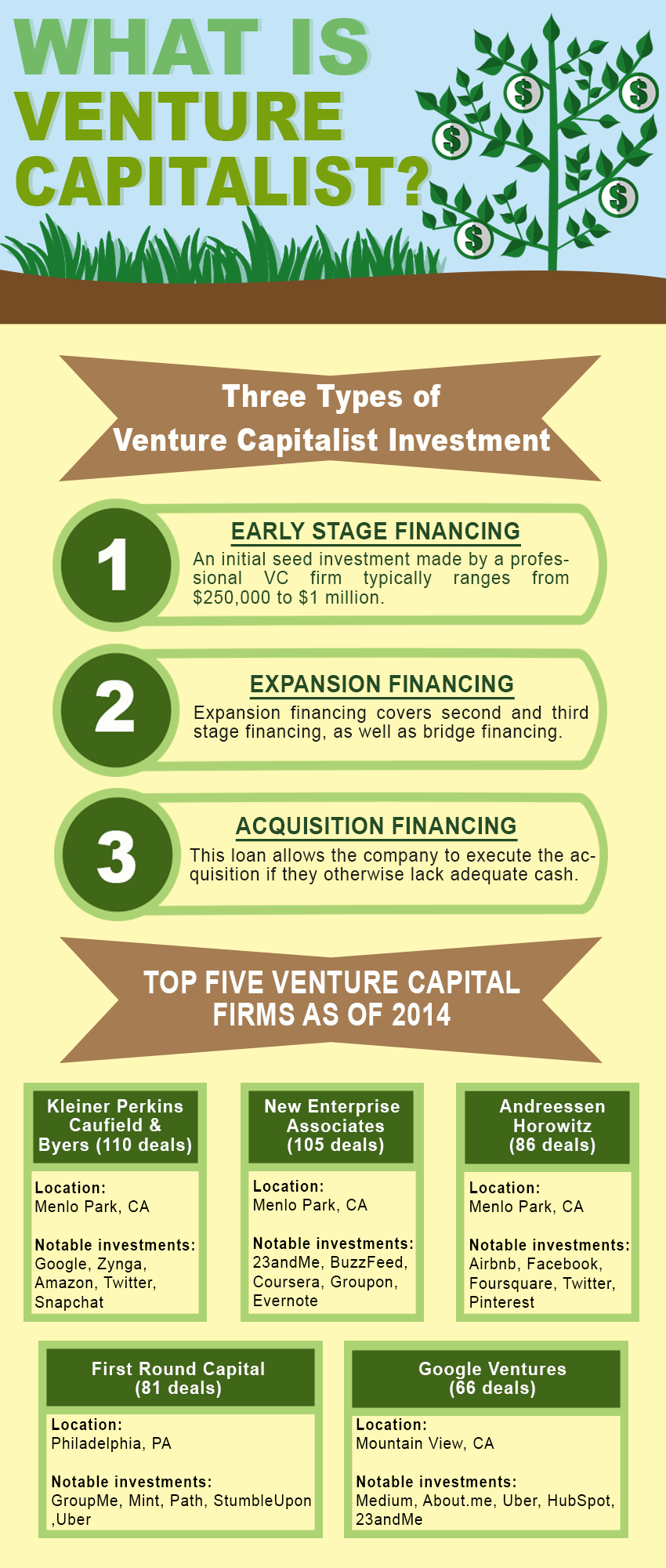
Venture capital is essentially the provision of funding to a growing company in exchange for equity. Venture capitalists are those who execute such transactions. They seek out high potential companies in the early stages of growth for the purpose of investment. Such investments are usually good for five years minimum to seven years max. A return on investment is usually achieved after the company is purchased by a larger company or raises money through an IPO.
There are three types of venture capitalist investment: the early stage, the expansion stage, and finally, acquisition financing. Below we have overviewed what each investment entails.
3 Types of Venture Capitalist Financing
EARLY STAGE FINANCING

Early stage financing involves the financing of startups, seed financing, and first stage financing. Seed financing refers to capital offered to entrepreneurs with a promising business proposal. The funding may go towards hiring employees, product development or marketing activities, among other possibilities. An initial seed investment made by a professional VC firm typically ranges from $250,000 to $1 million.
Startup financing entails funding businesses, usually no more than a year old, with high potential and a need for upfront capital. Many of these companies may not even have started selling their products as they often require ample funding to launch production and sales. Only then can they enter the public business arena.
EXPANSION FINANCING
Third stage financing is targeted companies that have attained profitability or are at least breaking even. This financing goes towards even larger scale expansion. It is often utilized for projects that involve acquiring real estate or escalating product development.
Bridge financing covers operational expenses preceding an IPO. The capital raised from an IPO then goes towards repaying the financier.
ACQUISITION FINANCING
As a condition of financing, venture capitalists often demand an equity stake in the company. They may also request representation on the board of directors. More than anything else, venture capitalists prioritize maximizing their return on investment. With this in mind, they may pressure the pressure the recipients of their funding to sell their company or request renegotiation of the original deal.












